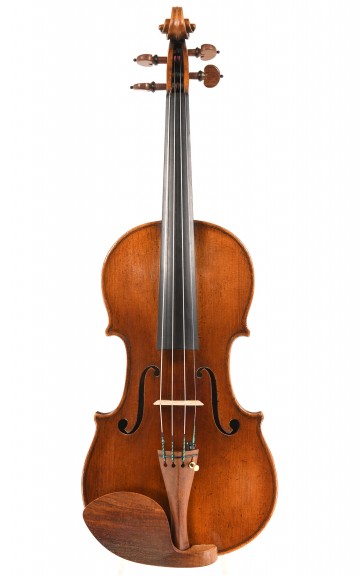Is it all right for a violin to have a wolf tone?
Cellists and bassists are all too familiar with something known as a wolf tone. This treacherous acoustic phenomenon occurs most frequently in larger stringed instruments: violinists do not encounter the problem nearly as much. Musicians whose violins or cellos have a wolf tone learn very quickly where it is, and they intuitively develop avoidance strategies: whenever possible they try not to use the note in question, play with uncertainty or become sloppy in their intonation in an effort to work around the wolf. But what is all of this about, and what does it tell us about the quality of a string instrument? Is a fine violin flawed if they have a wolf?
- What is a violin wolf tone?
- Why do violins and cellos have a wolf tone?
- So can a violin wolf be tamed?
What is a violin wolf tone?
A wolf tone (also just called a “wolf”) is a note that cannot be played properly on a stringed instrument. It happens most commonly when musicians play quietly, which is to say when the bow is applying very little pressure. The only thing you can hear is whistling overtones (harmonics) or a breathy sound. Particularly persistent wolves can only be conquered with intense pressure; in these cases, the string will reverberate as it should, but the sound itself is stuttery and not pretty. Its name probably comes from the howling sound of the overtone – or perhaps it comes from the suggestion that a wolf is “attacking” and “swallowing” the tone. In case of uncertainty whether your violin has a wolf tone, a good violin shop can help - also in its "elimination".
Why does a violin or cello have a wolf tone?
Many musicians blame themselves the first time they encounter a wolf. But even the most refined technique can only help a little, if at all, and there is no point in changing strings or using different rosin. The reason? The wolf does not come from outside; it is caused by the specific design of the instrument affected.
The simple explanation is that a wolf develops when a stringed instrument plays a particular frequency that overlaps with a strong unmuted frequency of the instrument itself – and when this frequency also overlaps with the frequency of a certain note. When the note in question is played, the body of the instrument starts reverberating in such a way that the frequency of the string begins to “wobble” or is cancelled out completely.
The place where this frequency is found depends on the design of the instrument and is different in every case. Celli and bases have wolves much more often than violins, since their bodies are too small relative to their tuning. On a cello, wolves are usually around located the F or F# rarely lower than that, although they may occur all the way down to the D.
When a violin has a wolf tone, it is fundamentally regarded as a construction flaw, but this is not the case. It is true that top-quality instruments should not have a wolf, but if individual notes are poor in their response, that is not necessarily a defect in the instrument. The violins of historic masters are often known for being quite temperamental; an off-note may in fact have more to do with a musician’s capabilities, or it may also be that the culprit disappears because the musician knows the instrument well enough. Having an instrument up properly – for example, by the experts at Corilon violins – can also get rid of wolves.
So can a violin wolf be tamed?
There are tried-and-true methods for weakening the effect of the wolf, if not getting rid of it altogether. Something known as a wolf eliminator can be put on a string between the bridge and the windings and then be adjusted to dampen the problematic frequency. As a rule, violins need to be set up or optimised acoustically, a process which tends to affect the entire character of the sound. Here a violin maker will attempt to manipulate the wolf tone towards a frequency between two notes in such a way that it rarely, if ever, occurs during normal playing. In other words, the violin and cello wolf is not gone but has been “hidden,” musically speaking.
Information and further violin-related reading:
The violin: practical tips on care and maintenance
Finding a student violin in the proper size
How to select a violin, provenance, value and violin appraisal
The violin bow: practical tips on care and maintenance







